In the Japanese mountains lies a mysterious network of megalithic tunnels known as the "Tonkararin tunnel". With a millennial appearance, it is thought that they were excavated between the Yayoi and Kofun periods. Some speculate that the tunnel is actually a sort of Shinto shrine, used in certain rituals connected to the nearby Eta Funayama burial mound, but the folkloric tradition of Nagomi makes it the mythical hiding place of the goddess Amaterasu.
di Marco Maculotti
translation of the article Delving into the Depths of Japan's Mysterious Tonkararin Tunnels by Elizabeth Moore, published on Ancient-Origins.net
Inside the Japanese mountains in the Northern Kyushu region there is a mysterious network of megalithic tunnels known as "Tonkararin tunnel". These ancient structures probably date back to the XNUMXth or XNUMXth century, although their actual age remains unknown. Archaeologists, scientists and locals are constantly debating why this tunnel system was built. Some academics speculate that it was historically used in certain Shinto rituals related to the neighbor mound of Eta Funayama, but there are even supporters of the theory, derived from local folklore, that it is the mythical hiding place of the goddess Amaterasu, which is believed to be the mythical Ancestor of the Japanese imperial dynasty.
This ancient series of tunnels was only discovered by archaeologists in the 70th century and reexamined in the 1.460s. It measures approximately 445 feet (13 meters) in length and varies in width and height. At the highest point the tunnel reaches 4 feet in height (XNUMX meters) with the areas narrowing to the point that they barely allow passage. These measurements prompted archaeologists to theorize that these tunnels were originally natural aquifers leading to nearby Kofun tombs. At first glance this theory appears to be logical. The tunnel system, in fact, runs along the slope of a mountain and along it you can reach the Kofun tombs in five or ten minutes.
However, upon closer inspection, archaeologists cast this theory aside. A quick image search clarifies the reason: the tunnels have a clean, patently artificial design, and therefore cannot be natural tunnels formed by the passage of water. The rectangular entrance leads to a descending staircase towards the inside of the galleries. So while some cracks in the tunnels may have been caused by water and wind erosion, the entrance and stairs have clearly been hand-sculpted with great care. This megalithic ruin winds its way through darkness varying in width and height. Clearly these tunnels were erected hundreds if not thousands of years ago, but when exactly were they created and by whom?
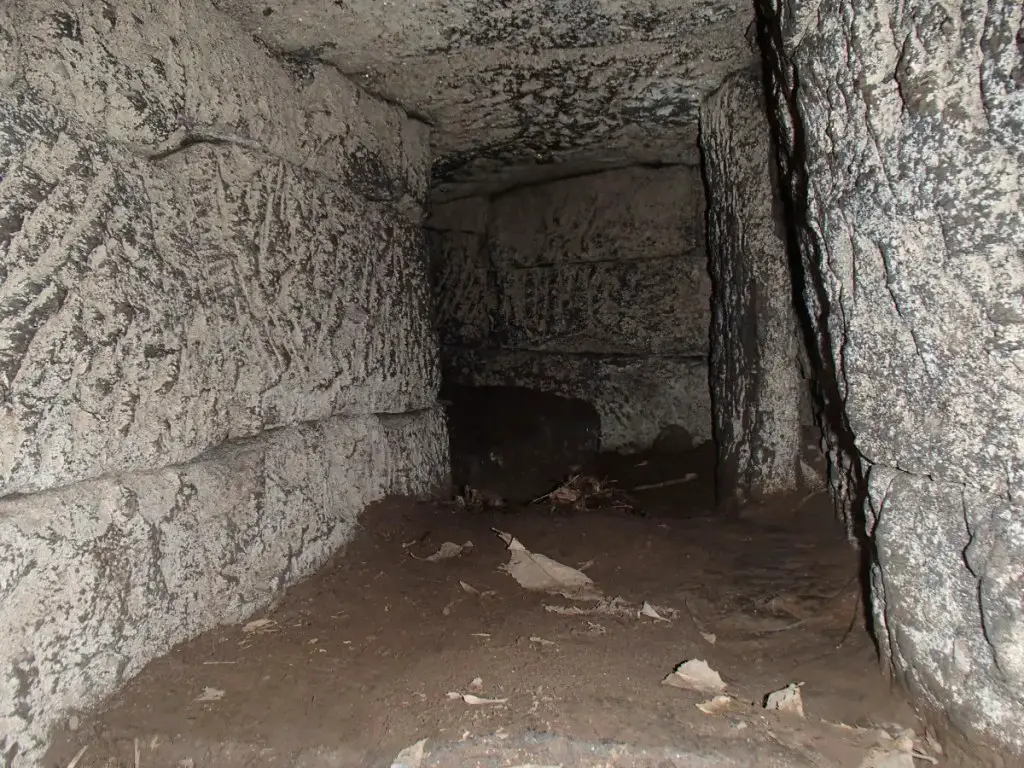
When were these mysterious tunnels created? Overview of the Yayoi (300 BC - 300 AD) and Kofun (250 - 550 AD) periods
The Tonkararin Tunnel System is located in Nagomi, a city in Kumamoto Prefecture in Northern Kyushu. This rural area has a rich and long history, full of adventures and falls of different civilizations. Many researchers associate this tunnel with the Eta Funayama tomb, which probably dates from the Kofun period. But could it be even older? To find out, we need to look at the Yayoi period that ushered in the Kofun traditions.
The Yayoi period is between 300 BC and 300 AD This period brought many changes to Japan, probably originating from Korea, including the cultivation of rice. Back then the ancient Japanese lived in thatched, semi-underground houses. It dates back to this era theerection of dolmen in the context of funeral practices. When this funeral practice reached northern Kyushu it merged with that of the burial pit and funerary objects such as tubular vases and pearls were buried near the dolmens. The Yayoi culture brought new changes to Japan and potentially modified the Tonkararin tunnel system. Considering that this culture used moats for many purposes, the crevice within this mountain may have inspired them.
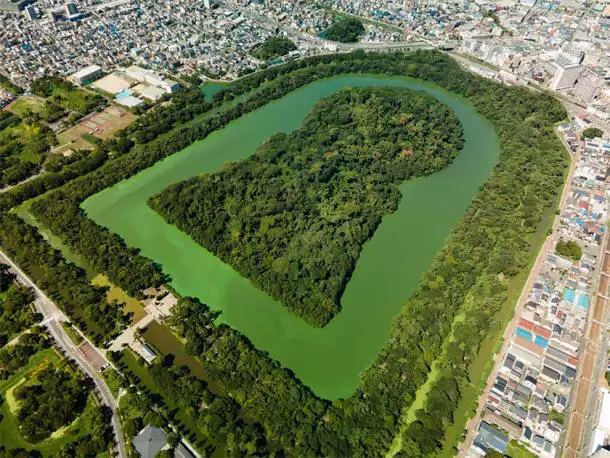
Immediately after the Yayoi period, the Kofun period began in 250/300 AD and ended around the middle of the sixth century of our era. The name of this era derives from Kofun burial mounds scattered throughout Japan, which contained the tomb chambers of members of the ruling class. These tombs had, when viewed from above, one shape similar to a the keyhole, becoming more complex over time. Unadorned and plain tombs generally date back to the third century, however the fourth and fifth centuries saw the rise of many more burial mounds, and much richer ones, meaning the unification of the power of the ruling class. The Sueki pottery found in these tombs is eerily similar to modern day porcelain and contained gray-blue pigments. The Kofun period of the XNUMXth century was reminiscent of the great tombs of the New Kingdom of Egypt, with painted walls, large sarcophagi, funerary objects of bronze mirrors, swords, horse harnesses, ornate carvings and beautiful clay pots.
The Kofun period is characterized on the one hand by the unification under a single power of the entire Japanese archipelago, on the other by theadoption of Shinto as an imperial religion: the unification of the cults connected several villages that had never before had reciprocal relations. One belief that unified the archipelago was the Amaterasu tradition, the Solar Goddess believed to be the mythical ancestor of the emperors of the Land of the Rising Sun.. A common topos in this tradition is that the goddess hides inside a rocky caveIt is therefore not surprising that Nagomi's local beliefs have connected the myth of the presence of the goddess to the tunnels of Tonkararin.

Why are the Yayoi and Kofun periods important? The answer is simple: because the plausible architects of these mysterious tunnels lived in that era. During the Yayoi period, attempts were probably made to create a system of tunnels dug into the mountainside for agricultural use: these tunnels could have represented a shortcut to bring water to the rice fields. Unfortunately, there is no archaeological evidence to support this theory.
So what about the Kofun period? During the latter, as we have seen, shaped burial mounds lock they started popping up all over Japan. These shared the structure with the dolmen of the Yayoi period, but added additional details, such as painted walls and sarcophagi. The Tonkararin tunnel system is less than a ten minute walk from the Eta Funayama burial mound: for this reason, many archaeologists have theorized that this tunnel system is actually connected both for the position and "soul" (in the Shinto sense of the term) to this mound. Supporters of this hypothesis believe that they were used in certain shamanic and shinto rituals.
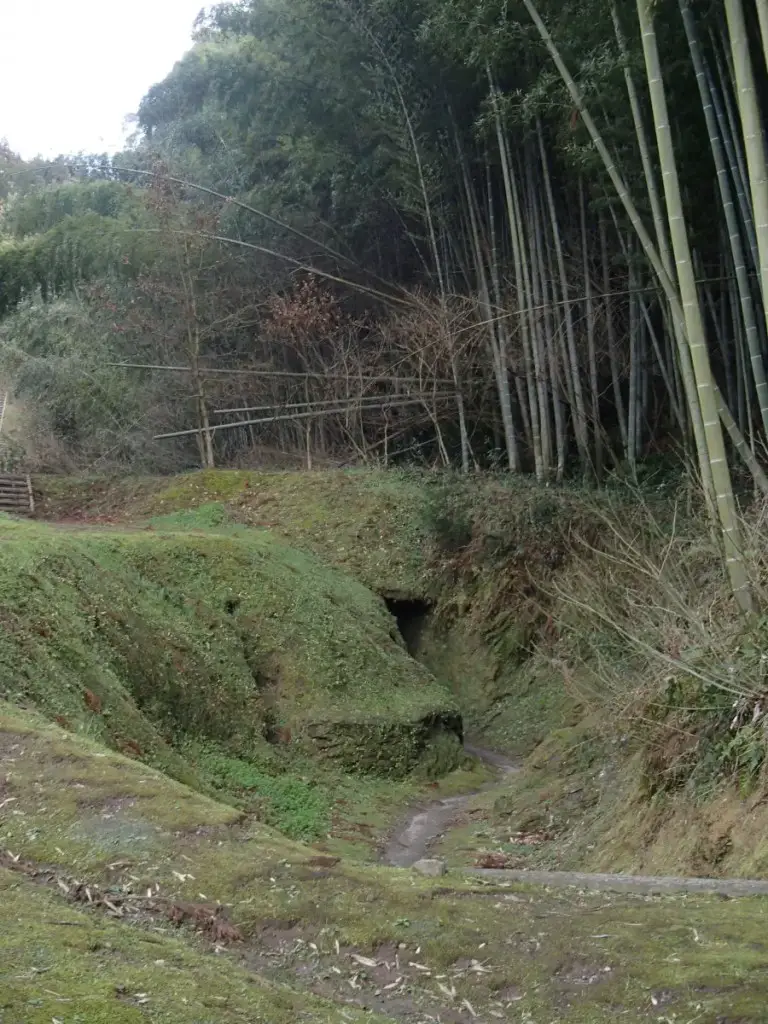
The influence of Shinto religious practice
The archaeological evidence of the former Shinto religious practices prove theirs connection with agriculture, water supply and navigation. The rituals included mirrors and swords, two objects that could aid the unfolding of spiritual forces.
Lo mirror, among other things, is revered as sacred object, epiphany of the Sun Goddess Amaterasu. To complete the Shinto mirror ritual, a pilgrimage to the local shrine: upon arrival you must first kneel in front of the mirror hanging at the entrance. Subsequently the faithful must bow in front of the mirror and observe their own reflection: this rituality would have the purpose of "Reflect the inner self" and to purify the worshiper. Finally the neophyte must reach the holy of holies and bow before the mirror that is kept there. The mirrors of the sanctuary, on which the believer meditates, are considered the body of Amaterasu in its earthly form.
According to Bernard, Shinto religion and ecology go hand in hand. Shinto ritual practices are largely experienced in the open air, which explains why many of the shrines are located on mountain sides, near rivers and vast forests. The natural environment plays a leading role in Shinto beliefs. Folklore states that the existence of a Shinto shrine near a village enhances the fruits of agriculture, because the deities will bring a more abundant harvest. Another purpose of the Shinto shrine, however, is that of connecting the human beings of the village to the spiritual forces, As well as of protect them from the chaos that nature spirits could bring within the urban social environment.

Treasures from the Eta Funayama burial mound
The Tonkararin tunnel system, as mentioned, is a short distance from the Eta Funayama burial mound. This was first excavated by archaeologists in 1873, an impressive feat considering the mound is a tomb in the shape of a the keyhole sixty-two meters long. Inside this tomb, archaeologists found a dolmen, or boulder-sarcophagus.
Buried under this large stone slab some were found bronze mirrors finely crafted, and as archaeologists dug deeper and deeper into the great tomb, more and more were discovered, each decorated with images of gods and animals of unknown origin. It is probable that these mirrors had an important royal significance. One of these bronze mirrors decorated with four beasts is now on display at the Tokyo National Museum.
In addition, they have been found tubular shaped pearls, of different colors and sizes, reminiscent of the Yayoi culture and the Korean mounds, e Magatama type jewels (in the shape of a "comma") in jadeite, strikingly similar to postmodern art. Weapons such as iron swords and even armor. Clearly, gods were buried here warriors, or at least someone who was prepared to go into battle.

magatama 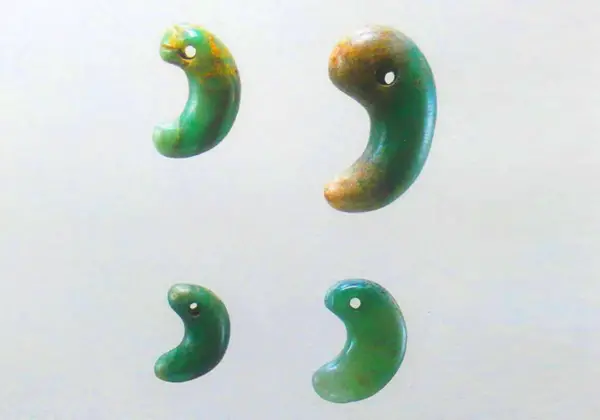
magatama 
Bronze mirror 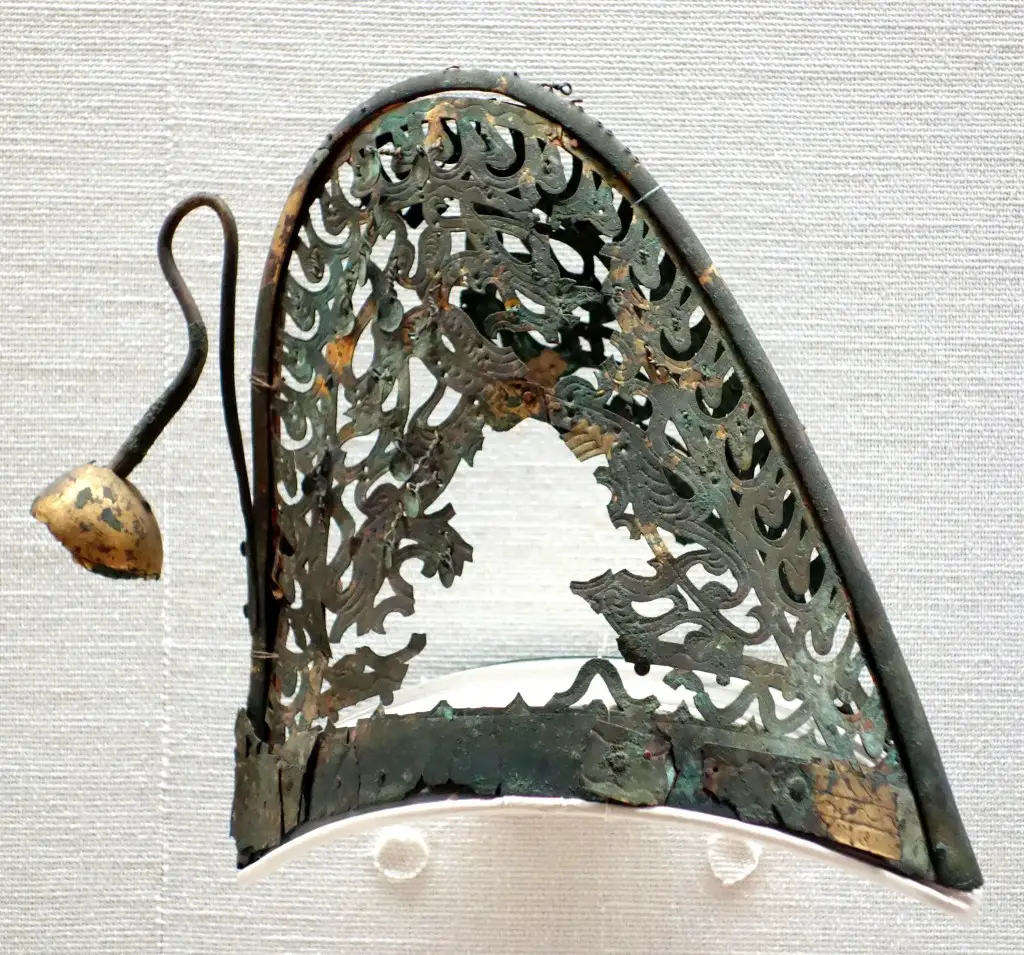
Royal headdress in bronze 
Bronze mirrors
Perhaps the most famous discovery of the Eta Funayama mound was made by local residents. The story of how this exactly happened is lost in the past. However, what remains is the discovery of one crown and a sword, both in gold, with an inscription, and other real objects, including gilt bronze headdresses, suitable for a queen, golden earrings, rings and plates.
The list of artifacts found is long and provides a clearer picture of life during the Kofun period. The workmanship of bronze, iron, silver and gold reveals great craftsmanship. The ring-shaped stirrups, helmet of armor and short armor depict a society ready for war. The iron arrowheads found together with the swords show the importance of the military and imply the close association between them and the royals. There ruff found inside this treasure suggests that royals also fought in battle; this item was similar to armor, but covered the neck and provided protection for the face.
Along with these military objects, one was located triple bell. This unique object probably has a religious value, especially important in individual rituals. It is important to note that bells were also used in animal husbandry during the Yayoi period: bells of various sizes were buried on the side of the hill, to promote the fertility of the earth and a fruitful harvest. So why was this bell buried in the Eta Funayama mound? Military items and jewelry are to be expected in most large tombs; but how do you explain the presence of a bell with three sounds, usually associated with a farmer? Perhaps the answer still lies within the mountain itself.
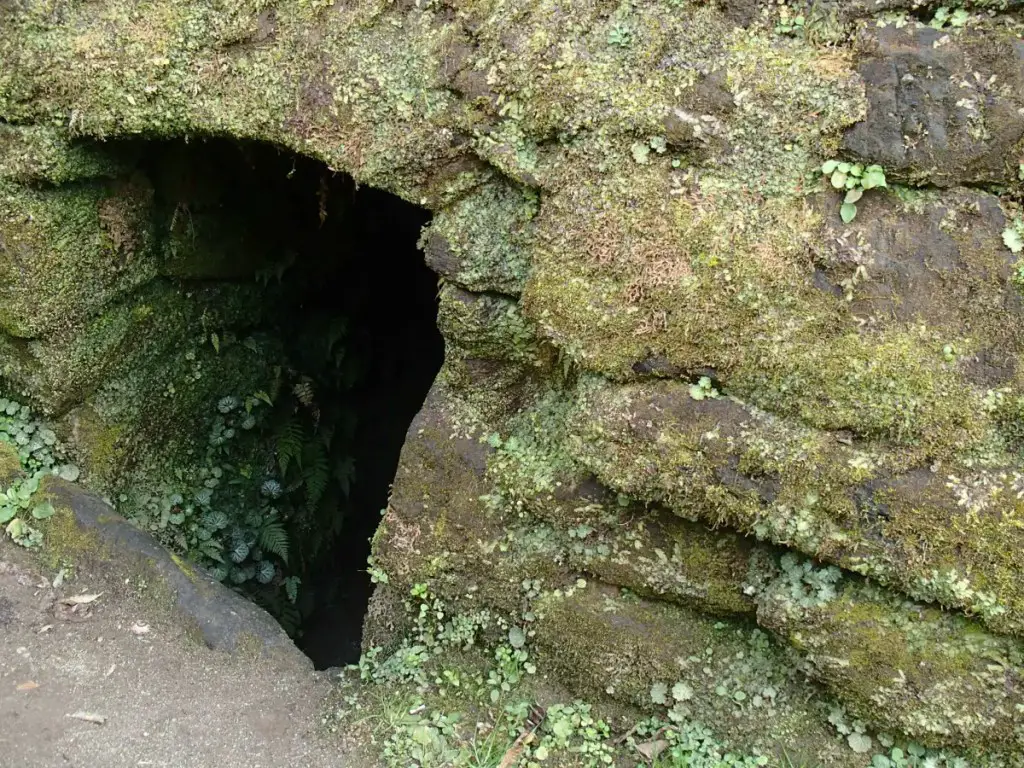
The Tokyo museum preserves most of these artifacts, however many have been lost over time, probably even sold illegally in private collections, as well as the treasures of Egypt, Pompeii and China. One has to ask, could any of these missing artifacts contain the answer to the Tonkararin tunnels? Was there a gold manuscript explaining its purpose? Or are there simply no true answers to this mystery? Perhaps the key to making sense of these questions can be found by taking a step back and really considering the tunnel dug into the side of the mountain like a Shinto shrine.
Are the Tonkararin tunnels a sanctuary?
If you take into account the history of the religious practices of the Japanese region of Kyushu and the knowledge of a certain "Sacred geography" Closely related to the religious view of Shinto, it seems likely that the Tonkararin tunnel system may have been a sanctuary after all. First, it is located near its community and on the slope of a mountain, a place charged with sacredness in the Shinto view. In addition, it is located a short distance from an important burial mound of the royal social class, and according to some opinions the two places are in communication as well as in "connection soul». This connection would make perfect sense within a Shinto view of geomantic knowledge of the so-called "places of power" (such as a burial mound where glorious characters are buried); always provided, of course, to interpret the tunnels as a Shinto shrine, from which the monks would exercise their rituals in connection with the mound of Eta Funayama.
This mysterious tunnel system that has existed for hundreds if not thousands of years, then, could really be the prototype of Shinto shrines. Its carefully carved stone walls and smoothed, largely merged within the natural landscape, denote a great respect for the surrounding nature. Maybe the same Sun goddess Amaterasu, Nagomi locals argue, is disappeared in this rocky slope, to hide from her unruly brother, the storm god Susanoo. In any case, to whatever extent one wants to give credit to the local tradition, the underground tunnel system of Tonkararin remains a place full of sacred, fascinating and mysterious energy even for the layman.


The lock shape is found the same in the water sanctuaries in Sardinia, various videos on youtube, many questions arise.